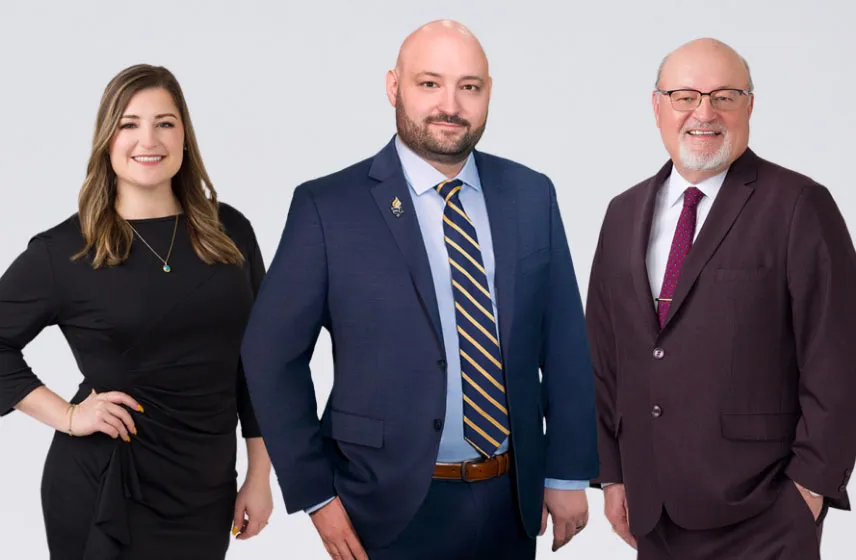The rise of the rideshare industry has changed the way we reach our destinations, decreasing the number of traditional taxi services and reducing reliance on public transportation.
While rideshare companies like Lyft and Uber are convenient and typically safe, sometimes a Lyft ride ends in a car accident, leaving the injury victim unsure how to navigate this unique type of claim to recover their damages.
If you or a close family member suffered serious injuries in a Lyft ride accident, contact us today to for a free evaluation from a Henderson personal injury lawyer and get prompt action on your case.
Table of Contents
- Why Choose Bay Law Injury Attorneys
- Understanding Lyft Accidents
- Determining Liability
- What to Do After a Lyft Accident
- How a Lyft Accident Lawyer Can Help
- How Long Do I Have to File a Claim?
- Talk to a Henderson Lyft Accident Lawyer
Why Choose Us as Your Lyft Accident Attorneys in Henderson?
Lyft and Uber cars have a unique insurance structure with a tiered plan for coverage depending on the stage of the rideshare when the accident occurred.
Unfortunately, this often leads to insurance companies pointing the finger at someone else, making a successful claim a challenging process.
By choosing Bay Law Injury Attorneys as your Lyft accident lawyers in Henderson, you’ll enjoy the following advantages:
- An attorney dedicated to achieving the largest possible settlement for your damages along with the skills and resources of the entire team behind your claim
- Open communication and availability so you’re always up to date on the process of your case
- An individually tailored strategy for the unique circumstances of your case rather than a formulaic approach that may not recover compensation for all of your economic damages and pain and suffering
- A law firm with years of experience standing up to Big Insurance and obtaining compensation for our injured clients, including those harmed in Lyft and Uber accidents
We offer our injured clients free case consultations and no upfront fees. Instead, you’ll enjoy a free case consultation and contingency-based payment so you pay nothing until we recover your damages.
Understanding Lyft Accidents
According to a University of Chicago study, ride-sharing services like Lyft and Uber have increased overall car accident numbers by as much as three percent nationwide.
Lyft drivers may become distracted behind the wheel or engage in other negligent behaviors that leave them at fault in an accident. Common causes of Lyft accidents include the following:
- Distracted driving
- Speeding to accomplish the most rides possible per shift
- Inexperienced driving
- Fatigued driving (many Lyft drivers work rideshares as a second source of income after a regular job)
- Failure to yield the right of way
- Aggressive driving
- Improper passing
- Unsafe merging or lane changes
- Tailgating
- Intoxicated driving
Whether you’ve been injured as a passenger during a Lyft ride or as a motorist in an accident involving a Lyft vehicle, you deserve compensation for your losses.
Determining Liability In a Lyft Accident
Once an accident occurs in a comparative negligence state like Nevada, the at-fault party is responsible for compensating injury victims through their insurance.
Rideshare services like Uber and Lyft distance themselves from direct liability for accident damages by using independent contractors as drivers rather than employees.
Fortunately, they do require their drivers to carry rideshare insurance which covers car accident damages when the driver is using their vehicle as a rideshare.
To recover compensation for damages requires the injury victim to prove the at-fault driver’s liability. Proving liability means showing the following:
- That the at-fault driver owed a duty of care to their passenger and others on the roadway
- They breached this duty through negligent actions
- Their breach of duty directly caused the accident and injury
- The injury victim suffered damages from the injury, like medical expenses, lost income, and pain and suffering
As a passenger in a Lyft accident, you cannot be at fault for the accident.
Common liable parties in Lyft accidents include the rideshare driver, another negligent or reckless driver, the manufacturer of a defective car part, or a negligent road maintenance agency that failed to correct or repair a hazardous roadway condition.
What to Do After a Lyft Accident
Navigating a Lyft accident claim begins at the scene of the accident when the injury victim can take certain steps to protect their physical and financial future if they are able to safely use their phone or ask someone else to use it for them.
After an accident, do the following:
- Call 911 to report the accident and request the police and an ambulance, or arrange transportation to the hospital as soon as you are cleared by the police to leave the scene
- Use the in-app accident reporting feature to report the crash to Lyft
- Use the phone’s camera to snap photos of the accident scene, the damaged vehicles, and any visible injuries
- Add the contact information of the Lyft driver and any other involved drivers
- Add the contact information of any eyewitnesses on the scene
- Go directly to the hospital or an urgent care center to ensure that you receive emergency treatment and a full medical evaluation to catch any other injuries with delayed symptom onset
Always ask for a copy of your medical report and the police report of your accident. These become critical evidence in your case.
How a Lyft Accident Lawyer Can Help?
Insurance companies are all too eager to deny claims due to paperwork errors or the lack of evidence of liability or damages. When a Henderson Lyft accident lawyer represents your best interests in a claim, they do the following:
- Investigates all aspects of the accident to determine liability
- Documents compelling evidence of liability, such as showing that they owed a duty of care to you or others, they breached their duty through an act of negligence, their negligence directly caused your injury, and you suffered damages from your injuries
- Carefully calculates your economic and non-economic damages to maximize your recovery
- Send a demand package to the appropriate insurance company
- Negotiates with the insurance adjuster assigned to the case to obtain the largest amount of compensation possible
- Obtains an ample settlement for your damages or take the case to court
Getting the most from a Lyft accident claim requires careful handling and meticulous paperwork to ensure the best possible result.
How Long do I Have to File a Claim After an Accident In Nevada?
Like all states, Nevada limits the time available to file a personal injury claim—including car accident claims.
The statute of limitations for a Lyft accident claim in Nevada is two years from the date of the accident. This limit ensures that evidence remains available and eyewitness testimony is reliable when a case goes to court.
Contact a Lyft Accident Lawyer In Henderson NV
Instead of taking on a complex Lyft accident claim without representation to safeguard your best interests, call the Lyft accident lawyers in Henderson at Bay Law Injury Attorneys to get the most out of your accident claim to recover damages.




